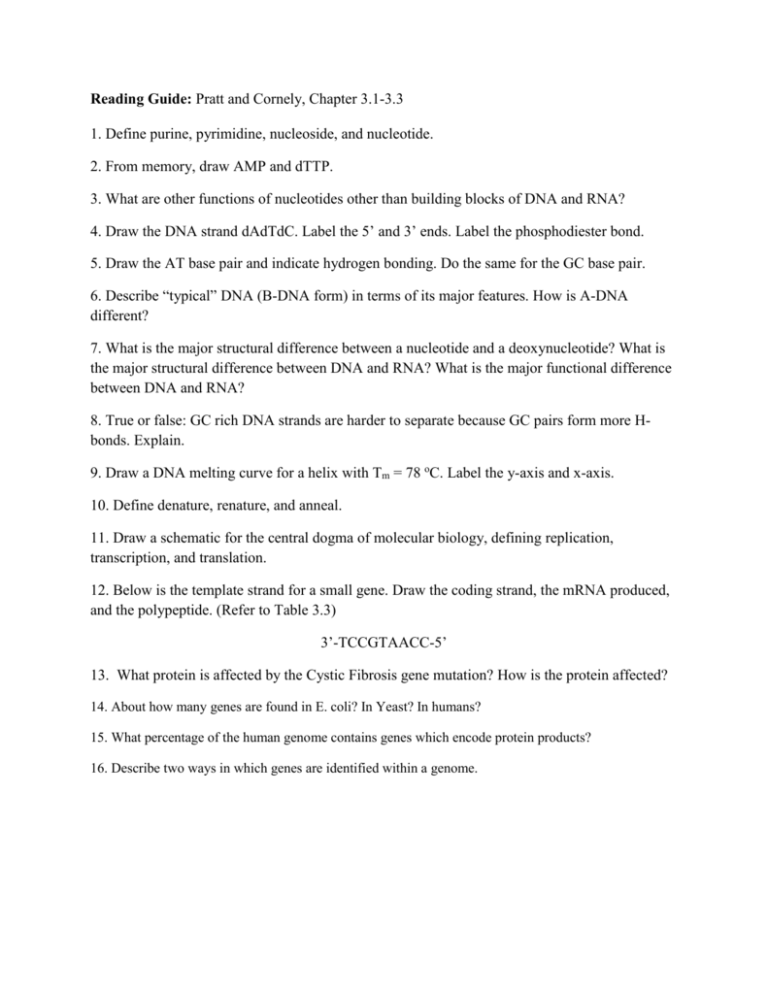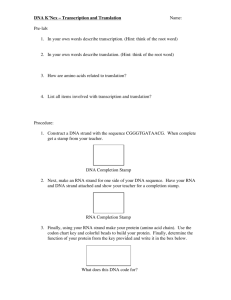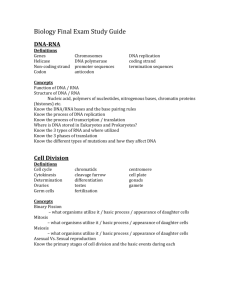Molecular Biology Reading Guide: DNA, RNA, and Genetics
advertisement

Reading Guide: Pratt and Cornely, Chapter 3.1-3.3 1. Define purine, pyrimidine, nucleoside, and nucleotide. 2. From memory, draw AMP and dTTP. 3. What are other functions of nucleotides other than building blocks of DNA and RNA? 4. Draw the DNA strand dAdTdC. Label the 5’ and 3’ ends. Label the phosphodiester bond. 5. Draw the AT base pair and indicate hydrogen bonding. Do the same for the GC base pair. 6. Describe “typical” DNA (B-DNA form) in terms of its major features. How is A-DNA different? 7. What is the major structural difference between a nucleotide and a deoxynucleotide? What is the major structural difference between DNA and RNA? What is the major functional difference between DNA and RNA? 8. True or false: GC rich DNA strands are harder to separate because GC pairs form more Hbonds. Explain. 9. Draw a DNA melting curve for a helix with Tm = 78 oC. Label the y-axis and x-axis. 10. Define denature, renature, and anneal. 11. Draw a schematic for the central dogma of molecular biology, defining replication, transcription, and translation. 12. Below is the template strand for a small gene. Draw the coding strand, the mRNA produced, and the polypeptide. (Refer to Table 3.3) 3’-TCCGTAACC-5’ 13. What protein is affected by the Cystic Fibrosis gene mutation? How is the protein affected? 14. About how many genes are found in E. coli? In Yeast? In humans? 15. What percentage of the human genome contains genes which encode protein products? 16. Describe two ways in which genes are identified within a genome.











